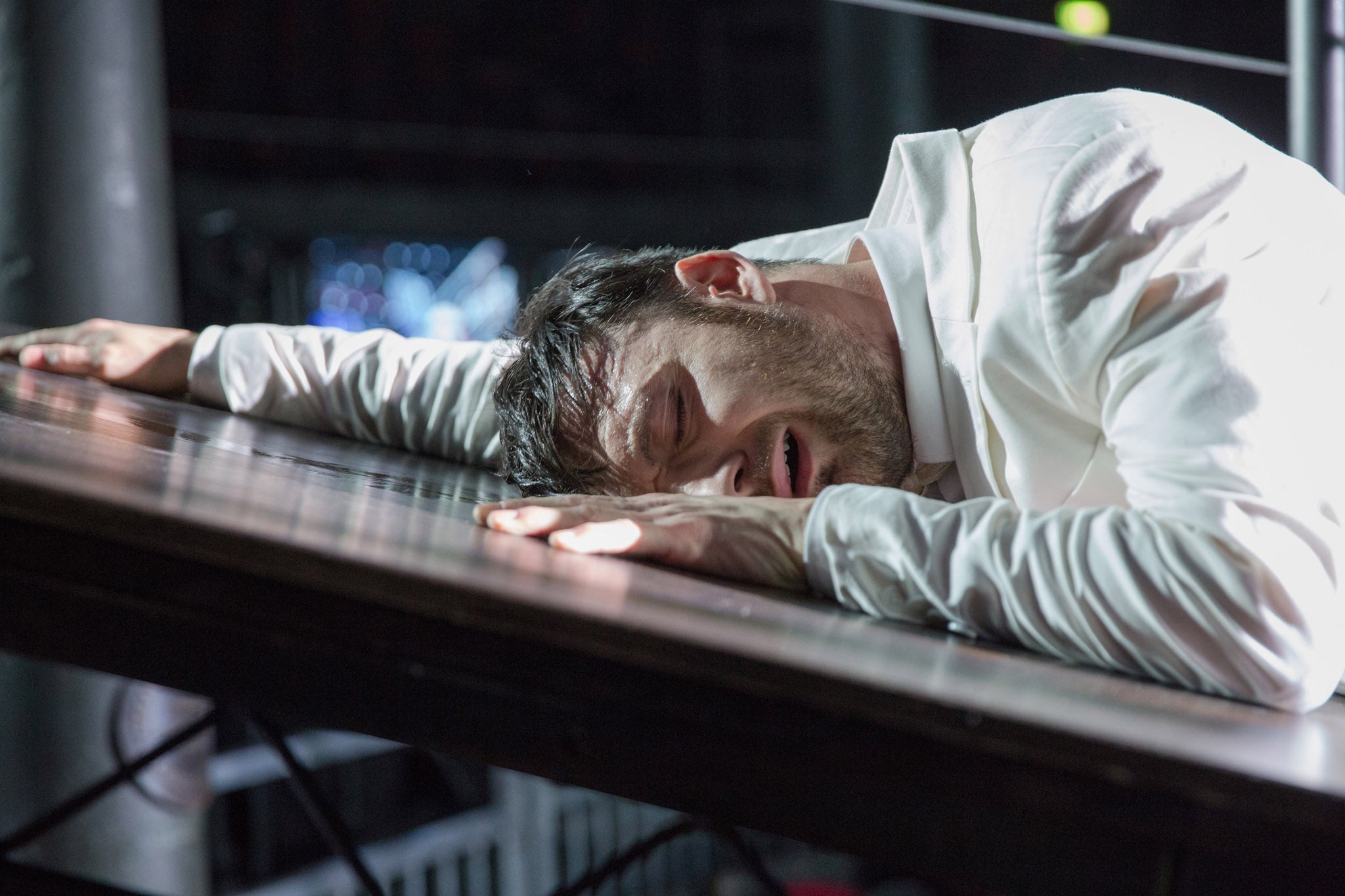Orfeo, Roundhouse, review: The Royal Opera House makes many firsts in temple to rock

What an irony: while cash-strapped English National Opera cancels its much-trumpeted ‘Orfeo’ at the Bristol Old Vic, the Royal Opera House presents its first-ever staging of Monteverdi’s masterpiece in that erstwhile temple to psychedelic rock, the Chalk Farm Roundhouse.
And it brings an army of other firsts: ex-RSC boss Michael Boyd makes his first foray into opera, as does his translator-librettist Don Paterson; fifteen young performers from East London Dance present a piece of circus-style choreography for the wedding scene, while young singers from the Guildhall form an ensemble chorus. Additionally, an online Orfeo game entitled ‘Don’t look back’ is being devised offstage by a group of 11-14 year-olds, and three Camden youth ensembles have been creating fanfares inspired by the music of Monteverdi.
Haverstock School’s fanfare for wind and percussion, performed in the foyer, was a pleasingly accomplished piece of work. Monteverdi’s own opening fanfare was then spiritedly delivered by musicians of the period-instrument Early Opera Company under the direction of Christopher Moulds, while a grey-suited cast processed onto Tom Piper’s circular stage followed by a crowd of dancers in boiler-suits, mystifyingly wearing manacles.
The arrangement of the characters on stage, with the gods on a balcony looking down on the mortals, apparently reflects Boyd’s conviction that we should see this story as being in part about organised religion, and he’s cast Monteverdi’s shepherds as priests. He introduces Orfeo as a Pieta Christ lying in Euridice’s lap, and near the close we get another Pieta image, but with the roles reversed. The shepherds’ dramatic function may indeed be to act as the voice of conformity and reason - as opposed to Orfeo’s wild passion – but this ecclesiastical scenario doesn’t illuminate much.
Boyd’s other big directorial decision has been to use his young dancers as a mobile set, getting them to do their circus stuff while the drama is unfolding. This can have unfortunate results: the movement direction is crude, and one of the shepherds’ most sublime duets gets drowned by the sound of pattering feet and falling bodies. For the first two acts there seems no dramatic connection between dancers and singers, who might as well inhabit separate worlds.
But the production gradually jells, permitting some lovely stretches of Monteverdian magic. We get superb singing from tenor Anthony Gregory, baritone Alexander Sprague, and countertenor Christopher Lowrey as the three Pastors, with James Platt’s Charon and Callum Thorpe’s Pluto adding ballast. Susan Bickley’s Messenger chills the spine and Rachel Kelly’s merciful Proserpina warms the heart. The Guildhall students’ chorus catch the requisite idiom to perfection.
Moreover, in Mary Bevan we have an Euridice exuding wonderful grace of tone and gesture, with Gyula Orendt’s expressive Orfeo her ideal complement, both musically and dramatically. This Orfeo’s long lament in Act Three commands the stage with its sweet sadness, and when he gives way to his paroxysm of despair, ‘Rendetemi il mio ben’ – ‘Give back to me my own’, in Paterson’s typically felicitous translation - his grief feels overwhelming.
A shame that Boyd’s final coup de theatre – an evidently dangerous trapeze act for Orfeo – should deflect our attention from the drama itself.
Join our commenting forum
Join thought-provoking conversations, follow other Independent readers and see their replies
Comments